Jean Arp
1886
Born on 16 September in Strasbourg. His father came from Kiel, his mother from the Alsace. He grows up bilingual. He will later use both his German given name ‘Hans’ as well as its French form ‘Jean’. His strong interest in Romantic poetry and contemporary literature begins during his school days.
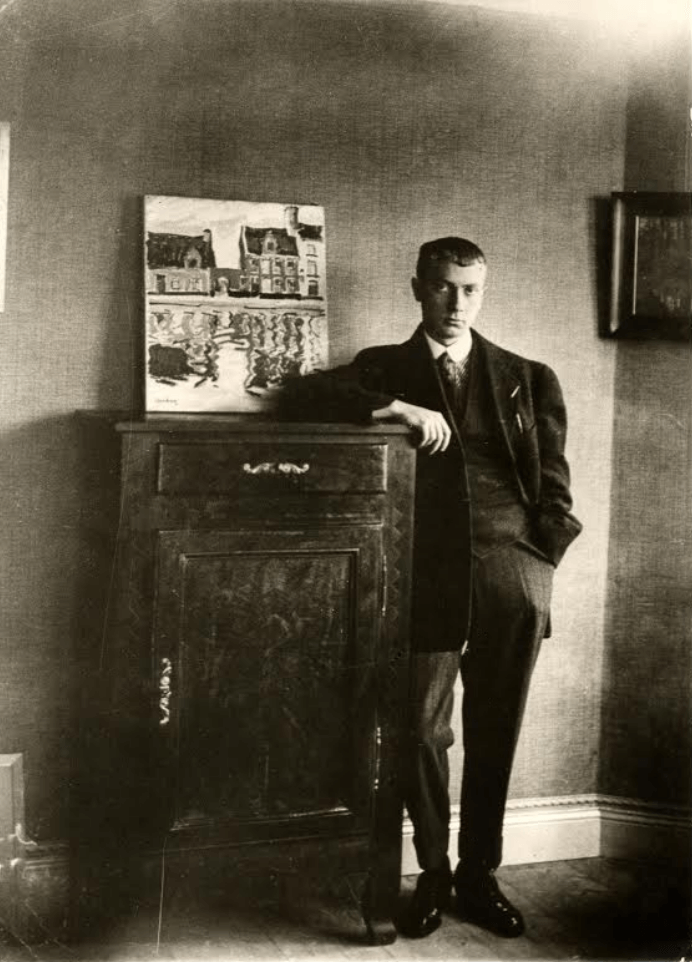
Jean Arp in the studio of Georges Ritleng, 1902
1904
Education at the School of Arts and Crafts in Strasbourg. Publishes his first poems. Is introduced to modern art in Paris.
1905-07
Studies at the Weimar Academy of Art with the painter Ludwig von Hofmann. Is introduced to the work of Aristide Maillol.
1908
Attends the Académie Julian in Paris.
1909
Moves to Weggis in Switzerland. Takes lessons in modelling with the sculptor Fritz Huf.
1911
Cofounds the painters group ‘Der Moderne Bund’ (The Modern Alliance).
1912
Visits Wassily Kandinsky in Munich; collaborates on the Der Blaue Reiter Almanach (The Blue Rider Almanac) and participates in the group’s second exhibition.
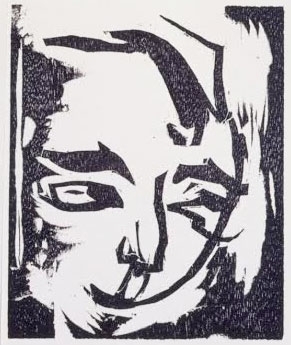
Jean Arp, Selfportrait, woodcut, 1912
1913
Publishes the book Neue französische Malerei (New French Painting) with L. H. Neitzel. Contributes to H. Walden’s magazine, Der Sturm (The Storm). Participates in the Erster Deutscher Herbstsalon (First German Autumn Salon), organised by H. Walden.
1914
Visits the Werkbundausstellung (Werkbund Exhibition) in Cologne, where he gets to know Max Ernst – the beginning of a lifelong friendship. Brings himself to safety in Paris before the outbreak of the First World War. Encounters with G. Apollinaire, M. Jacob, P. Picasso, R. and S. Delaunay and A. Modigliani, amongst others.
1915
Leaves France along with his brother and flees to Switzerland. Stays in Ascona, where he meets Arthur Segal and Adya and Otto van Rees. Moves to Zurich. Exhibits collages and tapestries there at the Galerie Tanner. Meets Sophie Taeuber and begins his joint artistic work with her. Beginnings of Konkrete Kunst (Concrete art).
1916
Opening of the ‘Künstlerkneipe Voltaire’ (Voltaire Artists Tavern), later called the Cabaret Voltaire, a podium for numerous events by Dada artists, in Zurich on 5 February.

Jean Arp, Untitled, indian ink and pencil on paper, ca 1916
1917
Begins working on abstract wood reliefs. First Dada exhibition at the Galerie Corray. Does the first recitation from Die Wolkenpumpe (The Cloud Pump) on 18 March. Intermittently with Sophie Taeuber on Monte Verità in Ascona.
1918
Designs furniture for the poet O. Flake. Creation of ‘duo collages’ with Sophie Taeuber. Begins artistic work ‘according to the laws of chance’.
1919-20
Repeat visits in Cologne. Active along with Max Ernst in the Cologne Dada movement. Gets to know El Lissitzky and K. Schwitters on trips to Berlin. Publication of the poetry volumes Die Wolkenpumpe and Der Vogel Selbdritt.
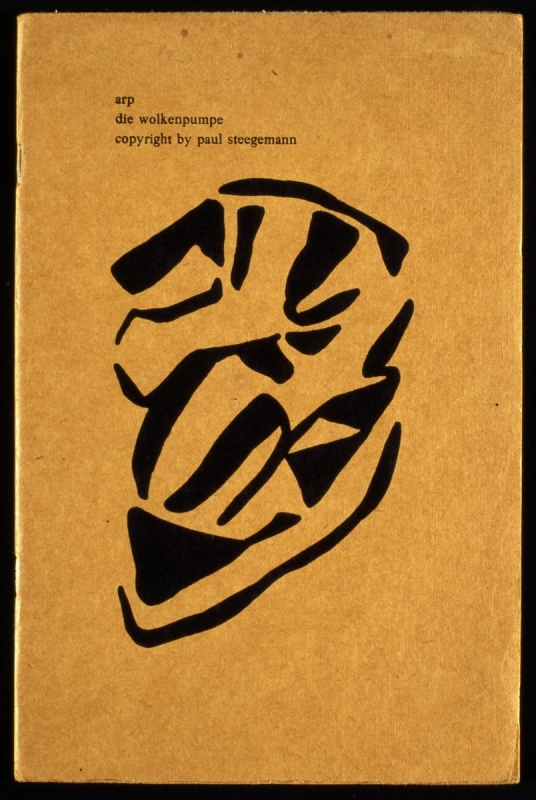
Jean Arp, “Die Wolkenpumpe”, copertina del libro, 1920
1921
Dada meeting in Tarrenz, Tirol.
1922
Marries Sophie Taeuber in Pura (Ticino). Takes part in the ‘Kongress progressiver Künstler’ (Congress of Progressive Artists) in Düsseldorf and the Constructivist meeting in Weimar.
1923
Visits K. Schwitters in Hannover. Publishes the series of lithographs 7 Arpaden.
1924
Move to Paris. Meets P. Mondrian there. Participates in the first exhibitions of the Surrealists.
1926-28
Paints the Aubette in Strasbourg along with Sophie Taeuber-Arp and Theo van Doesburg.
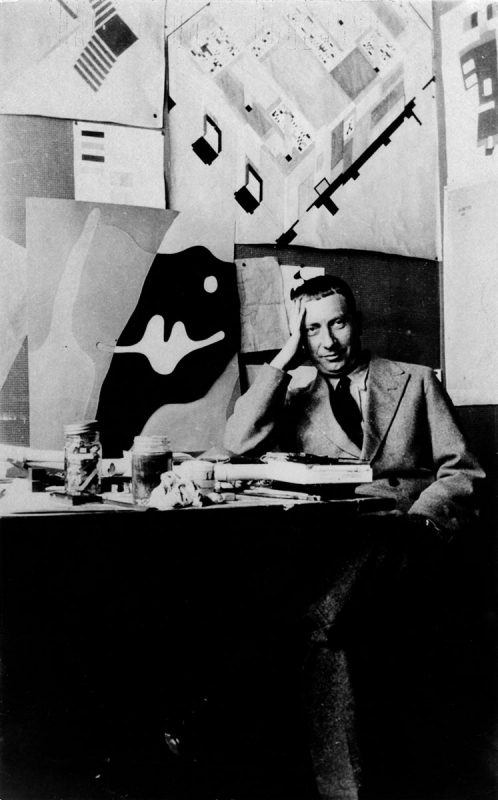
Jean Arp in the studio at the Aubette, Strasbourg, ca 1927
1928
Purchases a property in Clamart near Paris (Arp himself always states Meudon as the location!), today the seat of the Fondation Arp.
1930
Beginning of "sculpture in the round".
1931-34
Member of the Abstraction-Création group.
1932
Beginning of the epoch of papiers déchirés (torn papers). First encounter with Marguerite Hagenbach.
1940
Flees with Sophie Taeuber-Arp to Grasse in southern France.
1942
Escapes to Switzerland.
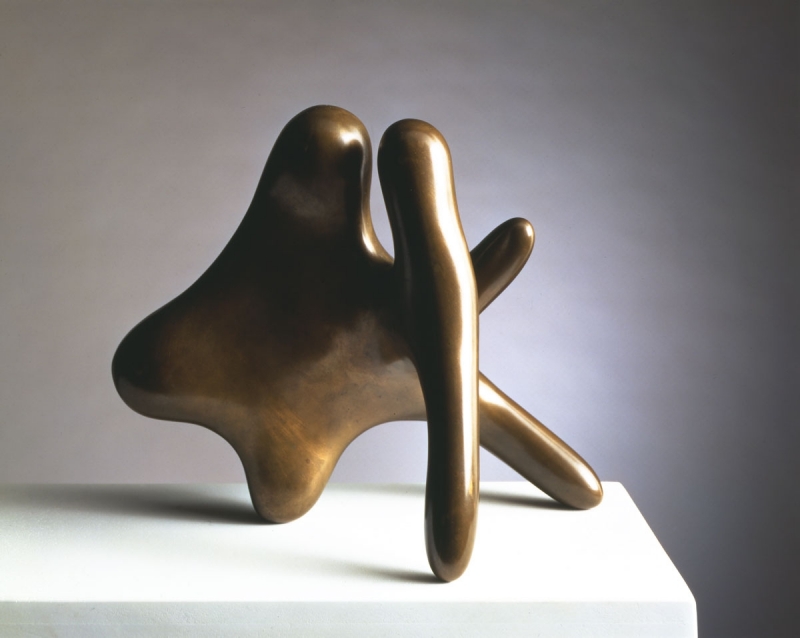
Jean Arp, Mediterranean Group, bronze, 1941/42
1943
Sophie Taeuber-Arp dies in Zurich on 13 January.
1943-45
Based in Zurich and Basel; produces mainly poetry.
1945
Returns to Clamart.
1946
Lives with Marguerite Hagenbach in part in Clamart, in part in Basel, which temporarily becomes his second place of residence.
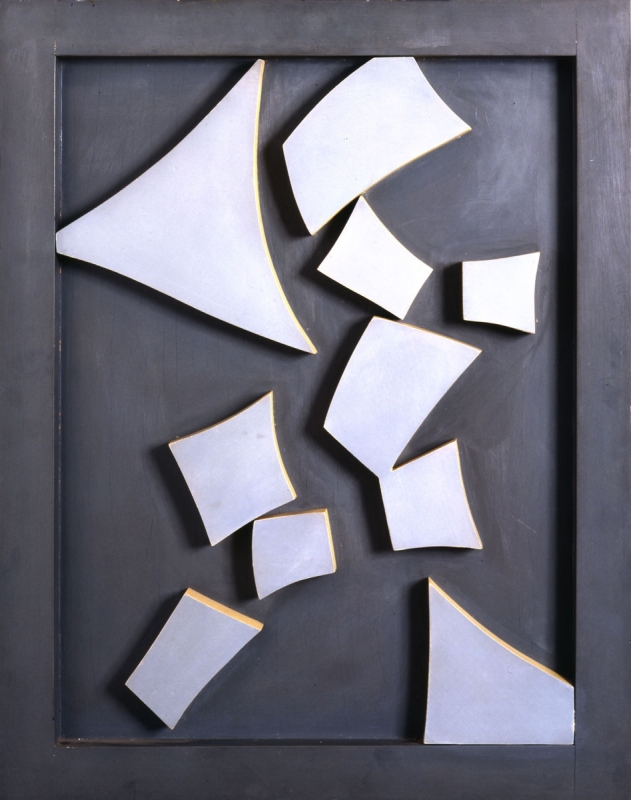
Jean Arp, Elementary forms, painted wood, 1947
1948
On My Way is published in New York as the first larger compendium of his literary and artistic work.
1949
First trip to the United States.
1950
Second trip to the United States. Designs a large wood relief for the Harvard University Graduate Center (architect W. Gropius).
1952
Visits Greece.
1953
Installation of the monumental version of the Wolkenhirt (Shepherd of Clouds) at the Ciudad Universitaria de Caracas, Venezuela.
1954
Grand Prize for Sculpture at the Venice Biennale XXVII.
1955
Second visit to Greece. Memories, poems and observations from 1914–54 are published under the title Unsern täglichen Traum... Erinnerungen, Dichtungen und Betrachtungen aus den Jahren 1914–1954.
1957
Bronze relief for the UNESCO headquarters in Paris.
1958
Third trip to the United States and Mexico.
1959
Purchases the Ronco dei Fiori property in Locarno-Solduno. Marries Marguerite Hagenbach.
1960
Aluminium relief for the Technische Hochschule Braunschweig. Awarded the Chevalier de la Légion d’Honneur. Visits the Middle East.
1961
Trip to the Rhineland; installation of the marble sculpture Wolkenschale (Cloud Bowl) in front of the University Library in Bonn. Visit to the Roman ruins in Trier. Receives the honorary award of the Cultural Section of the Confederation of German Industry (BDI). Is awarded the Stephan Lochner Medaille of the City of Cologne and becomes an Officier de l'Ordre des Arts et des Lettres.
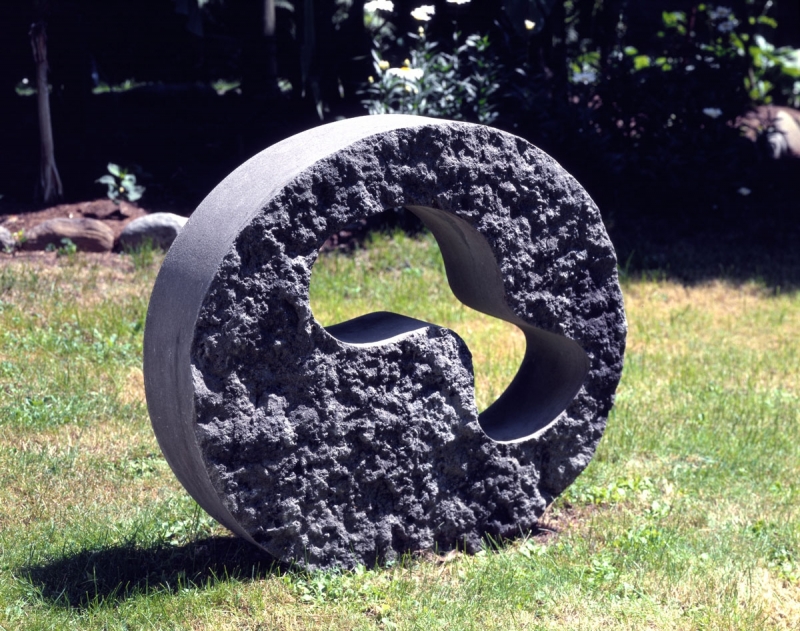
Jean Arp, Forest wheel I, limestone (belgian granite), 1961
1963
Grand Prix National des Arts, Paris.

Jean Arp, Locarno, 1962
1964
Grand Prize for Sculpture of the State of North Rhine-Westphalia. Carnegie Prize, Pittsburgh, Pennsylvania.
1965
Donates a significant part of his collection to the city of Locarno. Appointed an Honorary Citizen of Locarno. Awarded the Hanseatic Goethe Prize of the University of Hamburg.
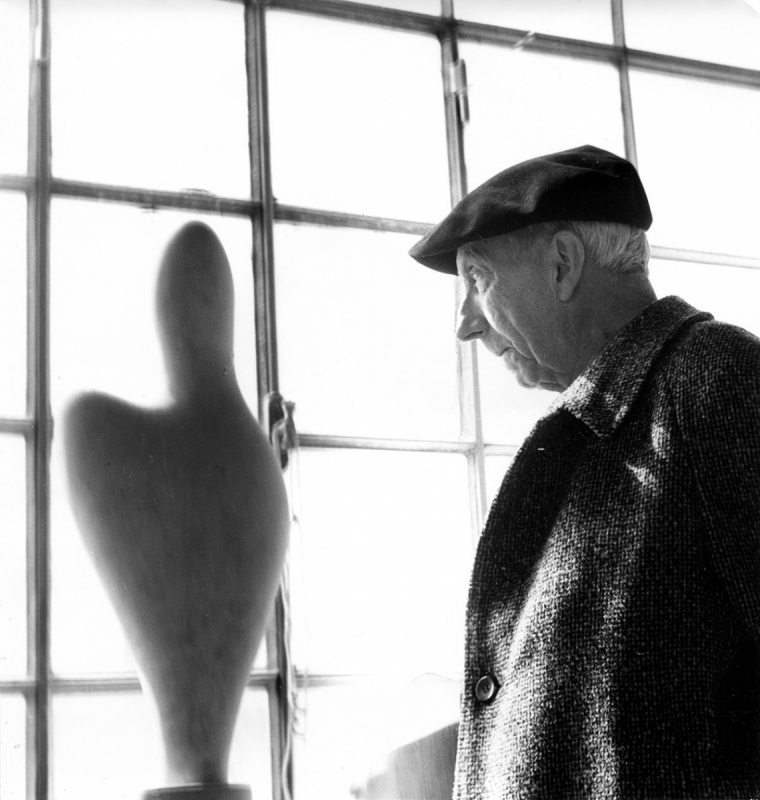
Jean Arp in the studio of Remo Rossi, Locarno ca 1965
1966
Receives the Grand Cross of Merit of the Federal Republic of Germany. Dies in Basel on 7 June.